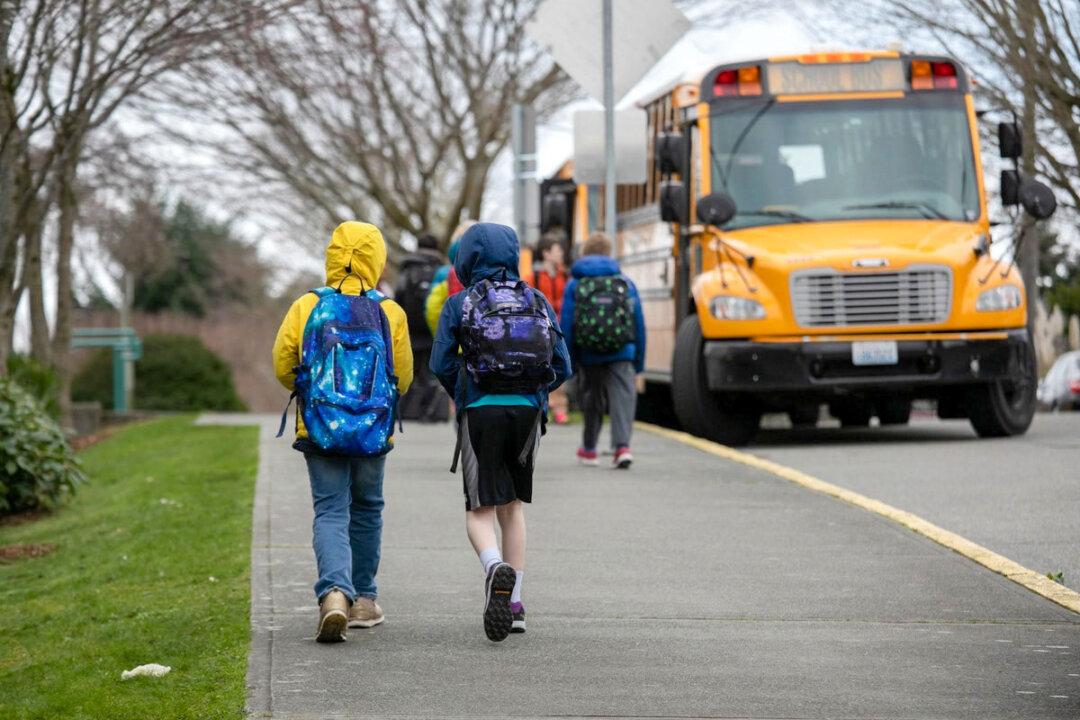Nico’s prospects were already looking dicey in the second grade. Raised by his Latina grandmother in a Spanish-speaking home, he was a witty boy whose clowning got him branded as a troublemaker in an Arizona public school outside Phoenix.
The boy’s turnaround wasn’t a fluke at Paradise Valley. It’s one of a small number of districts nationwide using an innovative approach to organizing classrooms. Elementary students are placed in six different groups based on ability and then are carefully mixed together in classrooms in ways that shrink the huge achievement gaps among them that make teaching so hard.
This orchestration of students allows teachers to tailor instruction so all students are challenged and can advance more quickly. And they typically do.
Last year, New York City officials bowed to pressure from advocates and ended selective admissions to most of the city’s middle schools. Earlier, Seattle dropped its gifted program of accelerated instruction.
“There’s a backlash. Districts are seeing a problem with underrepresentation in their gifted programs and say, ‘Let’s just get rid of them,’ and that’s a problem,” says Matt Fugate, an academic expert in gifted education who consults with districts. “They should be saying, ‘How do we make the programs more equitable?’”
“It works because teachers can truly target instruction after we provide that narrowed range in classrooms,” Brown says. “The model plays a key role in allowing us to address the learning of all students.”
The model has taken root in states such as Arizona, Florida, Indiana, Iowa, South Carolina, and Texas, where progressive educators have less influence and where gifted programs get more support.
The Vail School District near Tucson began the program in 2018, and after fifth graders showed improved performance on a cognitive abilities test, officials are expanding it to three more elementary schools, says Christine In-Albon, the director of gifted and advanced learning.
Customized Instruction
The model was first developed by the late Purdue University Professor Marcia Gentry, a prominent scholar on gifted education. She traced the idea back to her own experience of boredom in an easy Michigan high school where she was the valedictorian. Later, as a middle school teacher, she created a gifted program for students who wanted to be challenged.Then, in pursuing her Ph.D., she developed the hypothesis that all students, not just the gifted, would benefit academically if they were put in ability groups so teachers could customize instruction for them.
Paradise Valley in 2006 was one of the first districts in the country to adopt the model, albeit a slightly modified version. Dina Brulles, who developed and ran the program at Paradise Valley until last year, is the gifted program coordinator at Arizona State University.
Here’s how it works: Elementary students are evaluated each year for placement in one of six ability groups: Gifted, above average, average, low average, low, and special needs.
Next, classrooms are pieced together, often with students from three groups to reduce their vast achievement gaps. So gifted kids and low performers are not put together. A typical set up: above average, low average, and low.
Motivating students is a guiding principle of classroom design: Gifted and above average students are never mixed in classrooms to allow the latter to shine instead of being overshadowed by the brightest minds. The diligent above-average students emerge as role models for lower achievers, a position for which some gifted kids are not well suited.
Scores Rise at Paradise Valley
The program appealed to Paradise Valley because it’s a cost saver: Districts can address the academic needs of gifted kids, which Arizona and some other states require, without creating a costly stand-alone program and hiring new teachers. Instead, gifted students remain within the regular pool of students as one of six ability groups.Before beginning the program, Paradise Valley was in a bit of a funk. Many elementary students weren’t achieving the academic growth sought by the district. Gifted students in particular were unchallenged and disengaged in class and barely grew over the school year.
A small group of Paradise Valley principals, eager to try something new, raised their hands to be the first to test the program at their schools. After only a year, they were thrilled to see that test scores in reading and math rose across the board. That prompted the rest of the district’s 30 elementary schools to quickly sign up, Brown, the gifted director, says. Test scores rose in these schools too.
The district wants every student to master a year’s worth of material before moving to the next grade. Now, about 75 percent of students on average get there, an increase that coincides with schoolwide cluster grouping. “We don’t always see this growth with every student, and when we see a year where we dipped, we go back and fix that,” Brown says.
Paradise Valley also measures itself against other Phoenix area districts with similar student demographics: half white, a third Latino and a third low income. Its passing rates on a 2022 state test, for instance, topped neighboring Peoria Unified by a wide margin: 56 percent vs. 42 percent in English, and 48 percent vs. 36 percent in math.
Latino students are a significant part of Paradise Valley’s progress. Amid criticism that gifted programs nationwide enroll too few kids from low-income families, the district revamped the way it finds these students as part of its switch to the grouping model.
In the past, the district relied on parents to nominate their kids for testing, which meant the pool was mostly white and Asian. Now teachers are trained to spot behaviors associated with gifted students—they can be impatient with repetitive instruction, dismissive with a roll of their eyes, and intensely perfectionistic—and more Latinos are now being evaluated.
The district also decided to bear the costs of testing all students in one grade each year to find gifted kids who otherwise go unnoticed.
Ability Grouping and Its Discontents
Although the data doesn’t lie, critics find fault with the basic premise of reengineering classrooms around academic abilities.Ability grouping labels, like low average, can also become self-fulfilling prophecies because these students receive less challenging work and less is expected of them, says Allison Roda, a professor of education at Molloy University who researched gifted program admissions in New York City. “The model isn’t worth pursuing. It’s better to put all the students together, and if they are given high expectations, they will rise to the occasion.”
Julie Voeller, who teaches third grade at Paradise Valley, doesn’t agree. She says the program is popular among teachers in the district because it makes the classroom more manageable, giving them time to address the different needs of students.
The ability range is still wide. For a lesson on World War II that started with reading a text, Voeller assigned her gifted group an essay requiring students to think empathically about how they would feel if their parents went off to war. One student wrote about feeling “anguished” at the absence of the father, showing a remarkable vocabulary for a third grader.
The rest of the class, made up of average and below average groups, was given multiple choice questions. Some needed help from Voeller to find the answers in the text.
But lower performers are also allowed to tackle the tougher assignments, like the essay, and some do. But they are not graded on them.
When children fall behind, Voeller says, the program makes the problem easier to fix. After a math quiz revealed that 75 percent of her students were on track with fractions, which wasn’t a surprise in a classroom with gifted students in the mix, Voeller could quickly pivot to the small number of kids that needed a little extra help.
If she also had the weakest students in her class, which would be the case in a typical U.S. classroom, they would need a more robust intervention. Like most teachers, Voeller would turn her attention to the students who are furthest behind, leaving others who also need help in the lurch.
A Rocky Rollout in Texas
But as some districts discover, the sweeping changes required of the model are hard to pull off.Consider the Richardson Independent district, located north of Dallas.
As the rollout began in 2020, the biggest challenge came into focus –teachers. They can make or break most education reforms, and ability grouping requires them to do more.
Each spring, teachers must evaluate the performance of every student for placement in an ability group because, year-to-year, they may improve enough to move up to a higher group. That’s a goal of the program.
Then there’s the training of teachers, which may be the most important piece of all. They need to learn how to customize instruction to students of different abilities, which requires more effort than just giving everyone in class the same assignment. They also need specialized training in how to work with gifted kids, whose learning process differs from general education students.
Richardson decided to hit the pause button on the training requirement on concern that teachers would be overwhelmed by the workload. Instead, only 30 teachers were trained in gifted ed to serve as consultants to the district’s 40 elementary schools.
“I don’t need to make enemies of teachers who hate the model because it was a training nightmare,” says Monica Simonds, director of advanced learning programs and services.
The lack of training adds to the challenge of getting schools to buy into the program. At Richardson, many schools are enthusiastic, a handful are resisting it, and about a third are struggling mostly because of behavior issues among students who don’t like to be grouped together. Simonds sees these challenges as growing pains that are part of any big transformation.
Major Study, Mixed Results
The largest study of the program so far, involving more than 70 schools, underscores Richardson’s experience of tough sledding. The federally funded and large-scale study was undertaken by Marcia Gentry, who died in 2022, and colleagues to further investigate the program’s effect on academic performance.While researchers are now analyzing data and aim to publish results this year, co-author and Purdue University Professor Nielsen Pereira offered a preview into some of the study’s findings. In the first wave of 31 schools that joined the study, only six implement the program with a high degree of fidelity to its standards for sorting students into groups, training teachers, and tailoring instruction. Fifteen schools did a pretty good job, and ten scored low on fidelity.
“It shows how difficult it is for schools to make this type of change,” Pereira says. “It takes time and effort of everyone, administrators and teachers, who are always busy.”
But there’s an upside for the schools that execute total school cluster grouping in its entirety. Pereira says he is “cautiously optimistic” that data will show that these school achieved an increase in academic growth of students in all ability groups, and importantly, in the percentage of black and Latino kids found to be gifted.
The benefits of identifying these young students can be enormous for their future.
At Paradise Valley, Meghan, a Native American with family on the Navajo reservation, kept a low profile in school, partly because her culture frowns on grandstanding.
Then an elementary art teacher noticed her advanced spatial skills and asked the district to test her. Meghan qualified and was placed in the gifted cluster, which taught her the importance of perseverance when faced with more challenging studies.
She began to excel, and in high school her life took a dramatic turn. She won a scholarship to an elite university in California, where she now studies graphic design.
“Meghan is not the exception,” Brown says. “Our model allows us to serve hundreds of gifted learners from all socio-economic groups each year, as well as accelerate the growth of all of our learners.”






